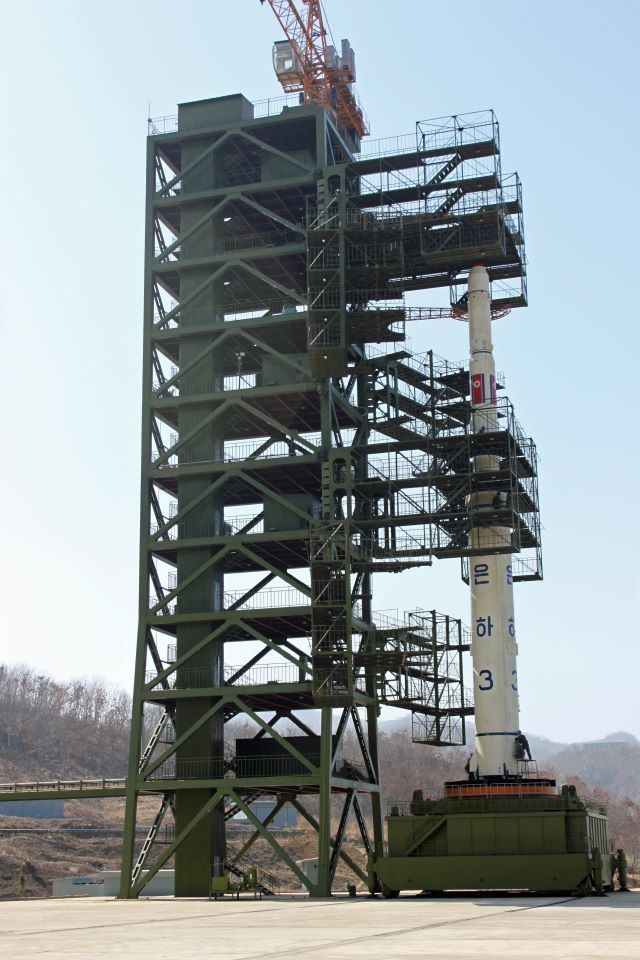Country of origin North Korea | ||
 | ||
Function Expendable carrier rocket Height 28–30 metres (92–98 ft) Diameter 2.4 metres (7 ft 10 in) Mass 89,000–91,000 kilograms (196,000–201,000 lb) | ||
The Unha or Eunha (Korean: 은하, 銀河, "Galaxy") is a North Korean expendable carrier rocket, which partially utilizes the same delivery system as the Taepodong-2 long-range ballistic missile.
Contents
History
North Korea's first orbital space launch attempt occurred on August 31, 1998 and was unsuccessful. This launch attempt was performed by a Paektusan-1 rocket, which used a solid motor third stage, a Scud-missile-based second stage, and a Nodong-1 based first stage. Nodong-1 was a North Korean-developed stage thought to be a scale-up of the old Soviet Scud missile. The Paektusan-1 stood 22.5 metres (74 ft) tall, was 1.8 metres (6 ft) in diameter, and weighed about 21 tonnes.
Vehicle description
The Unha's first stage consists of four clustered Nodong motors, which themselves are enlarged Scud motors. The second stage was initially thought to be based on the SS-N-6, although it, too, is now believed to be based on Scud technology. The third and last stage might be identical to the Iranian Safir's second stage which is propelled by two small gimballed motors.
Recent satellite images of the Sohae Satellite Launching Station showing an enlarged launch tower under construction indicate that an enlarged version, called Unha-X, might be under development, coupled with a North Korean propaganda poster showing such a vehicle.
Launch history
On 24 February 2009, North Korea announced that a Unha rocket would be used to launch the Kwangmyŏngsŏng-2 satellite. According to the South Korean government, the launch took place on 5 April from the Tonghae Satellite Launching Ground in Hwadae county. Several countries, including South Korea, the U.S., and Japan, voiced concerns that the launch would violate United Nations Security Council Resolution 1718 which prohibits North Korea from testing ballistic missiles. Russia also announced they urged North Korea to refrain from its planned rocket launch.
On April 5, 2009 the Unha-2 rocket was launched at around 02:30 hours UTC (11:30 hours KST). The U.S Northern Command said that the first stage of the rocket fell into the Sea of Japan, while the other rocket stages as well as the payload fell into the Pacific Ocean, and no object entered orbit. Later analysis indicated the rocket impacted 2,390 miles (3,850 km) from the launch site, and that the second stage operated normally but the rocket's third stage failed to separate properly. North Korea maintains that the rocket successfully put its payload in orbit.
On December 12, 2012, the Unha-3 Unit-2 rocket was launched at 00:49 UTC (7:49 EST). The U.S Northern Command said that the first stage of the rocket fell into the Yellow Sea, while the debris of the second stage was assessed to have fallen into the Philippine Sea and confirmed that the satellite had entered orbit.
